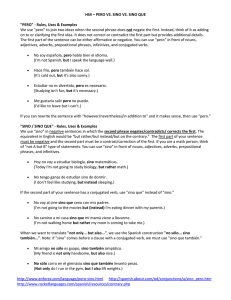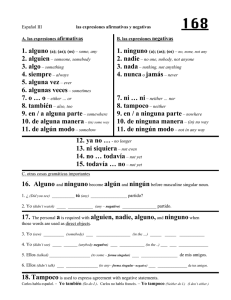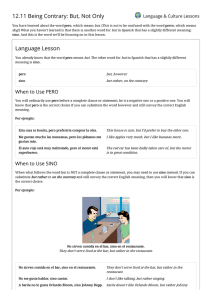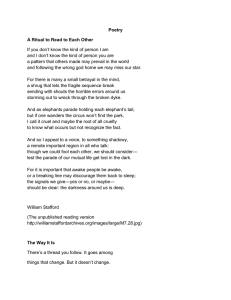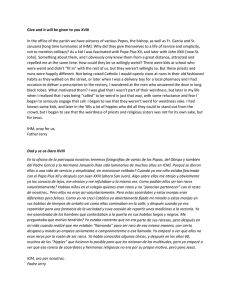What is the difference between pero and sino
Anuncio
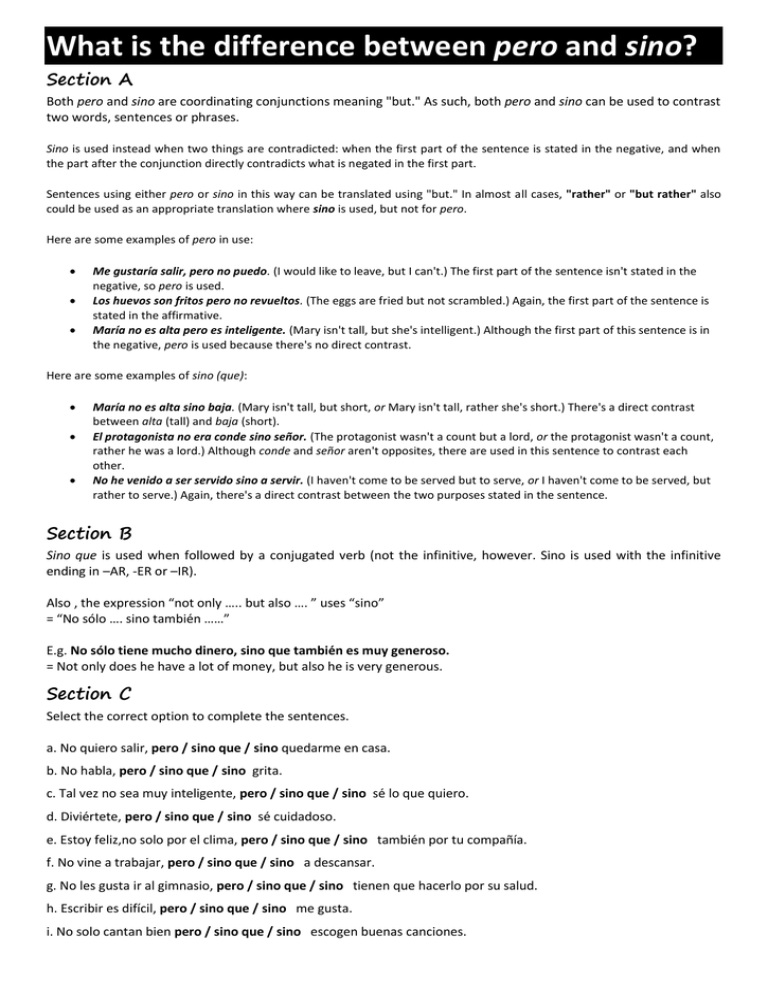
What is the difference between pero and sino? Section A Both pero and sino are coordinating conjunctions meaning "but." As such, both pero and sino can be used to contrast two words, sentences or phrases. Sino is used instead when two things are contradicted: when the first part of the sentence is stated in the negative, and when the part after the conjunction directly contradicts what is negated in the first part. Sentences using either pero or sino in this way can be translated using "but." In almost all cases, "rather" or "but rather" also could be used as an appropriate translation where sino is used, but not for pero. Here are some examples of pero in use: Me gustaría salir, pero no puedo. (I would like to leave, but I can't.) The first part of the sentence isn't stated in the negative, so pero is used. Los huevos son fritos pero no revueltos. (The eggs are fried but not scrambled.) Again, the first part of the sentence is stated in the affirmative. María no es alta pero es inteligente. (Mary isn't tall, but she's intelligent.) Although the first part of this sentence is in the negative, pero is used because there's no direct contrast. Here are some examples of sino (que): María no es alta sino baja. (Mary isn't tall, but short, or Mary isn't tall, rather she's short.) There's a direct contrast between alta (tall) and baja (short). El protagonista no era conde sino señor. (The protagonist wasn't a count but a lord, or the protagonist wasn't a count, rather he was a lord.) Although conde and señor aren't opposites, there are used in this sentence to contrast each other. No he venido a ser servido sino a servir. (I haven't come to be served but to serve, or I haven't come to be served, but rather to serve.) Again, there's a direct contrast between the two purposes stated in the sentence. Section B Sino que is used when followed by a conjugated verb (not the infinitive, however. Sino is used with the infinitive ending in –AR, -ER or –IR). Also , the expression “not only ….. but also …. ” uses “sino” = “No sólo …. sino también ……” E.g. No sólo tiene mucho dinero, sino que también es muy generoso. = Not only does he have a lot of money, but also he is very generous. Section C Select the correct option to complete the sentences. a. No quiero salir, pero / sino que / sino quedarme en casa. b. No habla, pero / sino que / sino grita. c. Tal vez no sea muy inteligente, pero / sino que / sino sé lo que quiero. d. Diviértete, pero / sino que / sino sé cuidadoso. e. Estoy feliz,no solo por el clima, pero / sino que / sino también por tu compañía. f. No vine a trabajar, pero / sino que / sino a descansar. g. No les gusta ir al gimnasio, pero / sino que / sino tienen que hacerlo por su salud. h. Escribir es difícil, pero / sino que / sino me gusta. i. No solo cantan bien pero / sino que / sino escogen buenas canciones.
